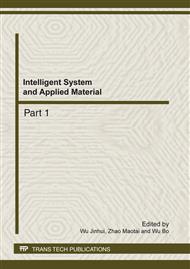[1]
V. Salas, E. Olias, A. Barrado, A. Lazaro, Review of the maximum power point tracking algorithms for stand-alone photovoltaic systems, Solar Energy Materials and Solar Cells, vol. 90, no. 11, July (2006).
DOI: 10.1016/j.solmat.2005.10.023
Google Scholar
[2]
Tirshan Esram and Patrick L. Chapman, Comparison of photovoltaic array maximum power point tracking techniques, IEEE Transactions on Energy Conversion, vol. 22, no. 2, June (2007).
DOI: 10.1109/tec.2006.874230
Google Scholar
[3]
D. P. Hohm and M. E. Ropp, Comparative study of maximum power point tracking algorithms, Proc. of 28th IEEE Photovoltaic Specialists Conference, p.1699–1702, Sept. (2000).
DOI: 10.1109/pvsc.2000.916230
Google Scholar
[4]
S. Jain and V. Agarwal, Comparison of the performance of maximum power point tracking schemes applied to single-stage grid-connected photovoltaic systems, IET Electric Power Applications, vol. 1, no. 5, Sept. (2007).
DOI: 10.1049/iet-epa:20060475
Google Scholar
[5]
D. Sera, R. Teodorescu, J. Hantschel and M. K. noll, Optimized maximum power point tracker for fast-changing environmental conditions, IEEE Trans. Ind. Electron., vol. 55, no. 7, pp.2629-2637, Jul. (2008).
DOI: 10.1109/tie.2008.924036
Google Scholar
[6]
Yeong-Chau Kuo, Tsomg-Juu Liang, Jiann-Fuh Chen, Novel MaximumPower-Point-Tracking controller for photovoItaic energy conversion system, IEEE Transactions on Industrial Electronics, Vol. 48, Issue: 3, June (2001).
DOI: 10.1109/41.925586
Google Scholar
[7]
Xin Wang and Aiguo Patrick Hu, An improved maximum power point tracking algorithm for photovoltaic systems, in Proc. Australasian Universities Power Engineering Conference (AUPEC 2004), 26-29 September 2004, Brisbane, Australia.
Google Scholar
[8]
L. Fangrui, D. Shanxu, L. Fei, L. Bangyin, and K. Yong, A variable step size INC MPPT method for PV systems, IEEE Trans. Ind. Electron., vol. 55, no. 7, pp.2622-2628, Jul. (2008).
DOI: 10.1109/tie.2008.920550
Google Scholar


